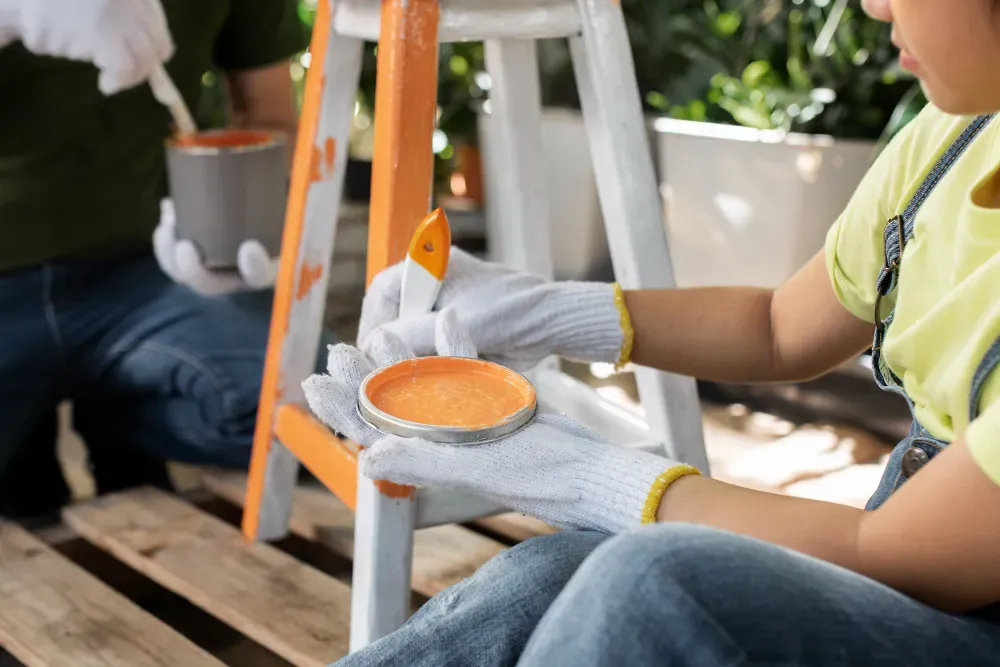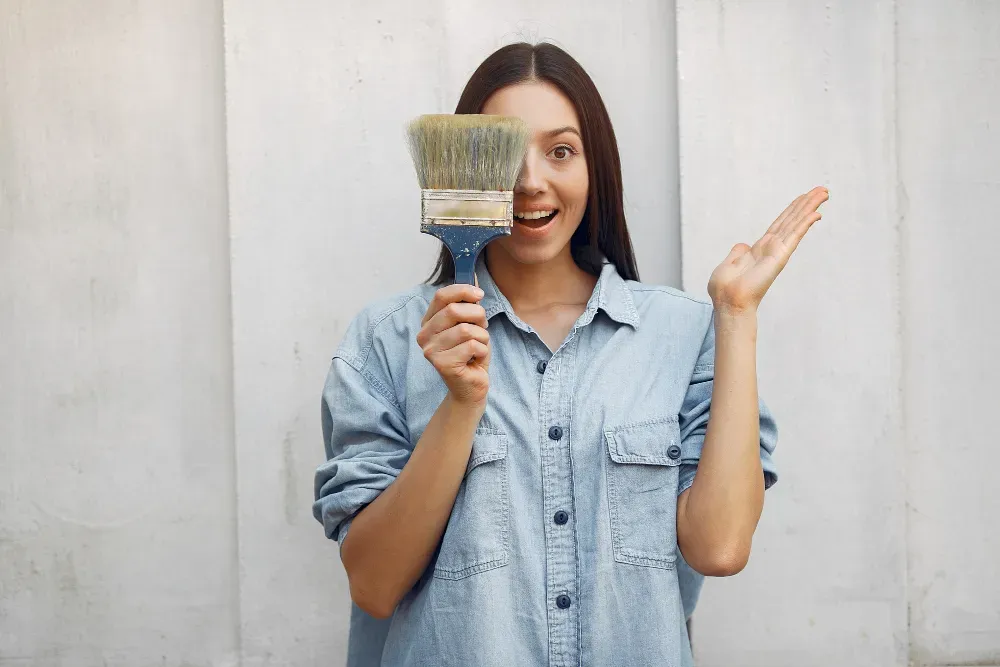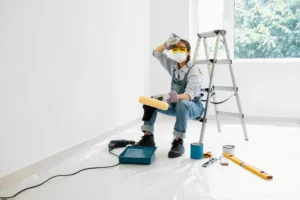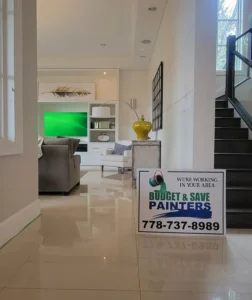Are you looking to give your living space a fresh, vibrant makeover without breaking the bank? Welcome to “Budget-Friendly Painting Hacks,” your go-to resource for cost-effective painting solutions. In this comprehensive guide, brought to you by Budget Painters, we’ll walk you through a spectrum of clever tips and tricks to transform your home on a budget. Whether you’re a seasoned DIY enthusiast or a novice in the world of home improvement, this blog post is designed to help you achieve professional-quality results without the professional price tag. Let’s dive into the world of affordable painting and discover how you can revamp your space while keeping your wallet happy.
Choosing the Right Paint
One of the most critical decisions you’ll make when embarking on a painting project is choosing the right paint. The type of paint you select can greatly influence both the outcome of your project and your budget. In this section, we’ll delve into the essential aspects of selecting the perfect paint for your budget-friendly painting project.
Exploring Different Types of Paint and Their Cost-Effectiveness
When it comes to paints, there is a wide variety to choose from, each with its unique characteristics and price points. Understanding these options is crucial for making a cost-effective choice.

Latex Paint: This water-based paint is known for its affordability and ease of use. It’s a popular choice for many DIY painters due to its low odor and quick drying time. We’ll explore the various types of latex paint, including flat, satin, and semi-gloss, and how they differ in cost and usage.
Oil-Based Paint: Oil-based paints, while durable, are often pricier than latex paints. We’ll discuss their advantages, such as their high gloss finish, and when it might be worth the investment.
Specialty Paints: Some speciality paints, like chalk paint or metallic paint, can be more expensive. We’ll evaluate their cost-effectiveness and when to consider using them for specific projects.
Tips for Selecting the Right Paint Color and Finish on a Budget
Choosing the right color and finish can significantly impact the overall aesthetics of your space. Here, we’ll provide tips for making informed choices that align with your budget.
Color Selection: We’ll guide you through the process of selecting the perfect paint color without overspending. This includes using paint swatches, creating samples, and considering the room’s lighting.
Finish Matters: Different paint finishes, such as flat, eggshell, satin, and semi-gloss, can have different price points. We’ll help you determine which finish is ideal for your project while staying within your budget.
The Importance of Paint Quality for Long-Term Savings
While it might be tempting to cut costs by purchasing cheaper paints, investing in quality paint can lead to long-term savings. We’ll explain why the quality of paint matters.
Durability: High-quality paints tend to be more durable and long-lasting. We’ll discuss how investing in durable paint can save you from repainting your walls frequently.
Resistance to Wear: Quality paints often offer superior resistance to wear and tear, making them a cost-effective choice in the long run.
Coverage and Fewer Coats: Premium paints typically have better coverage, which means you may need fewer coats. This not only saves on paint but also on the time and effort required for the project.
Essential Painting Tools
Before you embark on your budget-friendly painting project, it’s crucial to equip yourself with the right tools. With the right gear in hand, you can not only achieve a professional finish but also save money in the process. Here’s a detailed look at the essential painting tools you’ll need:

Brushes and Rollers
Quality brushes and rollers are the backbone of any successful painting project. While they might seem like an upfront cost, investing in good brushes and rollers can make a significant difference in the final outcome. Consider these options:
Natural Bristle Brushes: Ideal for oil-based paints, natural bristle brushes provide a smooth finish but can be pricier.
Synthetic Bristle Brushes: These are perfect for water-based paints and are usually more affordable.
Rollers: High-density foam or microfiber rollers are cost-effective and ensure even paint application.
Paint Trays and Liners
Paint trays are where you pour your paint and load your roller. To save on costs, consider using disposable plastic paint tray liners. Once you’re done, simply discard the liner, leaving your paint tray clean for future use.
Painter’s Tape
Painter’s tape is a budget painter’s best friend when it comes to achieving clean lines and preventing paint from going where it shouldn’t. Invest in good-quality painter’s tape to avoid any seepage.
Drop Cloths
Protecting your floors and furniture is essential. Use old bed sheets, plastic drop cloths, or canvas drop cloths to cover your surfaces and keep them paint-free. This step not only saves money but also prevents costly cleanup and repairs.
Sandpaper and Putty
Proper surface preparation is key to a successful paint job. Sandpaper and putty can help you smooth out imperfections and create an even surface for painting. Invest in various grits of sandpaper for different tasks.
Extension Poles
An extension pole can save you money by eliminating the need for a ladder in many cases. You can use it to reach high places and cover more area with each stroke.
Paint Grids
Instead of using a traditional paint tray, a paint grid can be a more budget-friendly alternative. It attaches to the top of your paint can, allowing you to load your roller directly from the can and eliminating the need for a separate tray.
Clean-Up Supplies
Don’t forget the cleaning essentials for post-painting cleanup. You’ll need paint thinner for oil-based paints and water or soap for water-based paints. Rags, old towels, or disposable wipes are handy for wiping down brushes and cleaning up spills.
Budget-Friendly Painting Techniques
When it comes to painting your home on a budget, mastering the right techniques can make a significant difference. In this section, we will explore the art of budget-friendly painting and how you can achieve professional-looking results without breaking the bank.
Brushing vs. Rolling vs. Spraying: Pros and Cons
Choosing the right painting technique can make or break your project. Let’s find the perfect method for your painting needs.
Brushing: Brushing is a classic technique that’s not only budget-friendly but also offers precise control. It’s ideal for detailed work, cutting in edges, and small areas.
Rolling: Rolling is a faster option, making it suitable for larger surfaces. It’s efficient and ensures even coverage when done correctly.
Spraying: Spraying is a time-saving technique that’s great for large, smooth surfaces. However, it may require more paint and additional equipment, which can impact your budget.
How to Achieve Professional-Looking Results with Basic Techniques
Unlock the secrets to pro-level painting using simple techniques. You don’t need to be a pro to get pro results – we’ll show you how. Let’s get started!
Proper Stroking: Whether you’re brushing or rolling, make sure to follow a consistent and smooth pattern. Avoid excessive pressure, which can lead to uneven paint distribution.
Cutting In: When brushing, “cutting in” means carefully painting the edges and corners with a smaller brush before using a roller. This technique enhances precision and reduces the risk of paint splatter.
Overlapping Strokes: Ensure that each brush or roller stroke slightly overlaps the previous one. This prevents streaks and ensures an even coat of paint.
Multiple Coats: Instead of applying a thick coat of paint at once, opt for multiple thin coats. This not only saves paint but also improves the durability and appearance of the paint job.
Innovative Methods for Creating Unique Paint Effects
Elevate your painting game with inventive techniques. Let’s explore the world of unique paint effects and bring your vision to life. Ready to get creative? Let’s go!

Sponging: Use a natural sponge to create textured patterns on your walls. This technique can add depth and character to your room without the need for expensive wallpaper.
Stenciling: Stencils are a cost-effective way to add intricate designs and shapes to your walls or furniture. You can easily create custom patterns without professional help.
Faux Finishes: Experiment with faux finishing techniques like ragging, dragging, or stippling to mimic the appearance of expensive textures like marble or wood.
Additional Tips for Budget-Friendly Painting
Use the Right Tools: Invest in high-quality brushes and rollers to ensure smooth application and minimize paint wastage. Well-maintained tools last longer, saving you money in the long run.
Practice Makes Perfect: If you’re new to painting, practice on a small, inconspicuous area before tackling the main project. This reduces the risk of costly mistakes.
Keep Paint Fresh: Seal your paint cans properly to prevent them from drying out. This ensures that you can use the remaining paint for touch-ups and future projects.
Conclusion
Achieving a budget-friendly painting project is not just about cutting costs but also about making the most of your resources. By maximizing paint coverage through proper preparation, the right tools, and efficient techniques, you can save both time and money while achieving a professional finish.
Additionally, exploring affordable paint alternatives such as eco-friendly options, recycled paints, and non-toxic choices allows you to paint within your budget while considering environmental and health factors.



